Having the right equipment is vital. It could make or break an afternoon of fishing. Although a lousy day spent fishing is better than a good day at work, we can all agree it’s better when the fish are biting. It doesn’t matter if the fish are biting if you don’t know where they are, and that’s where a fish finder comes into play.
Fish finders work using sonar, just like submarines, to look below the water and help you find fish. The sonar waves are sent out using a boat transducer that’s connected to the fish finder. Whether you bought a fish finder without a transducer or you’re doing your research for a fish finder with one, we’re here to help.
What is a Boat Transducer?
A transducer converts electrical current into sound waves. The waves are sent out into the water below. As the waves travel through the water, they bounce off objects and transmit that information back to the transducer. The transducer then picks up the return signal and relays that information to the fish finder. You’ll not only be able to see where the fish are, but you’ll also be able to see underwater structures and water depth.
Is a Transducer the Same as a Fish Finder?
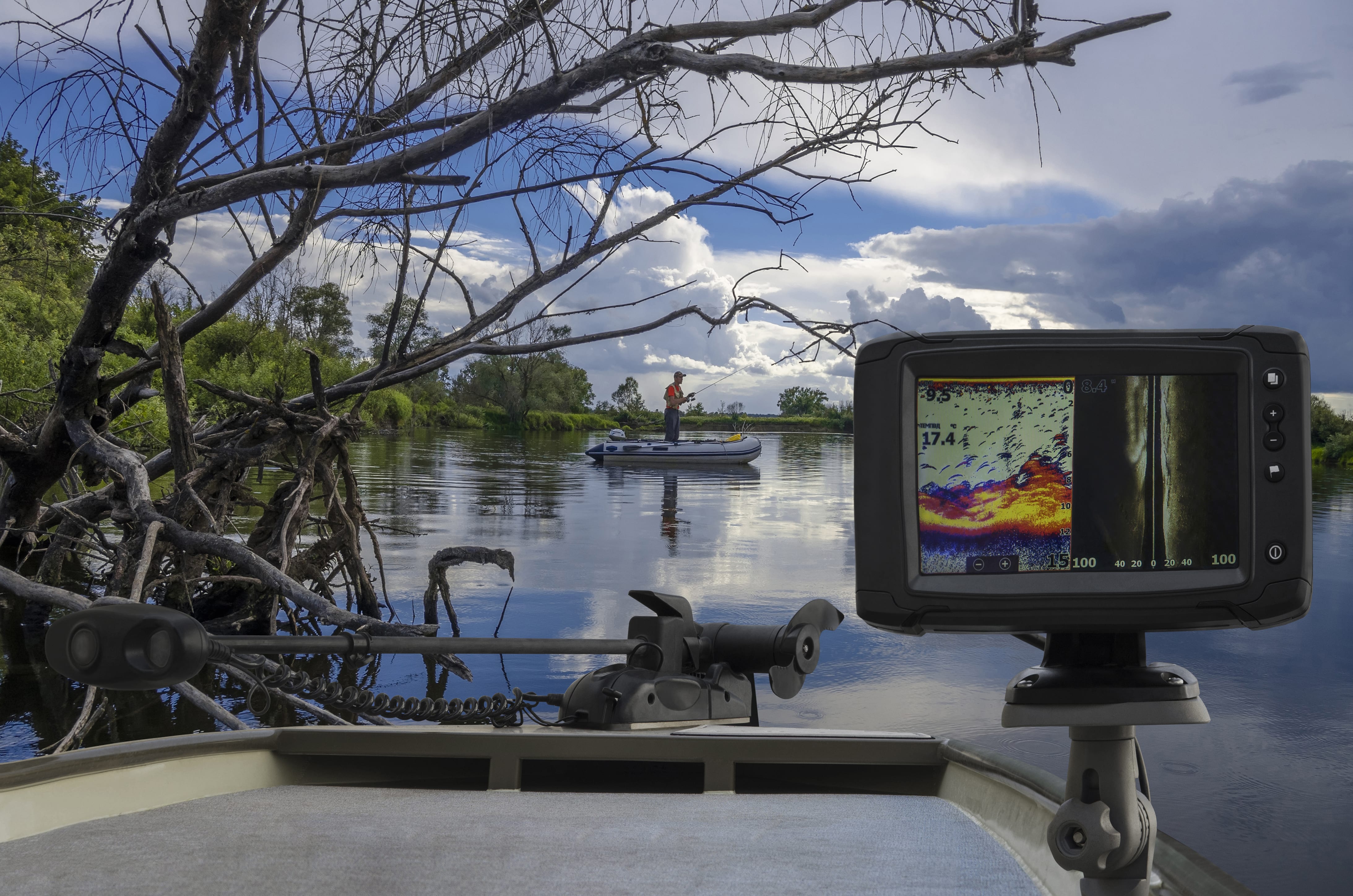
A transducer is part of a fish finder system. Some manufacturers include the transducer with the fish finder, whereas others offer it separately. It’s required for any fish finder setup. The term fish finder often refers to the monitor mounted in or on the dash, which displays an underwater image. The underwater image is made possible by the transducer.
Boat Transducer Types and Mounting Options
There are many different types of transducers; one distinction is how they are installed on the boat. The three main options are thru-hull, transom, and in-hull. Let’s review each type so you can make the right choice..
Thru-Hull
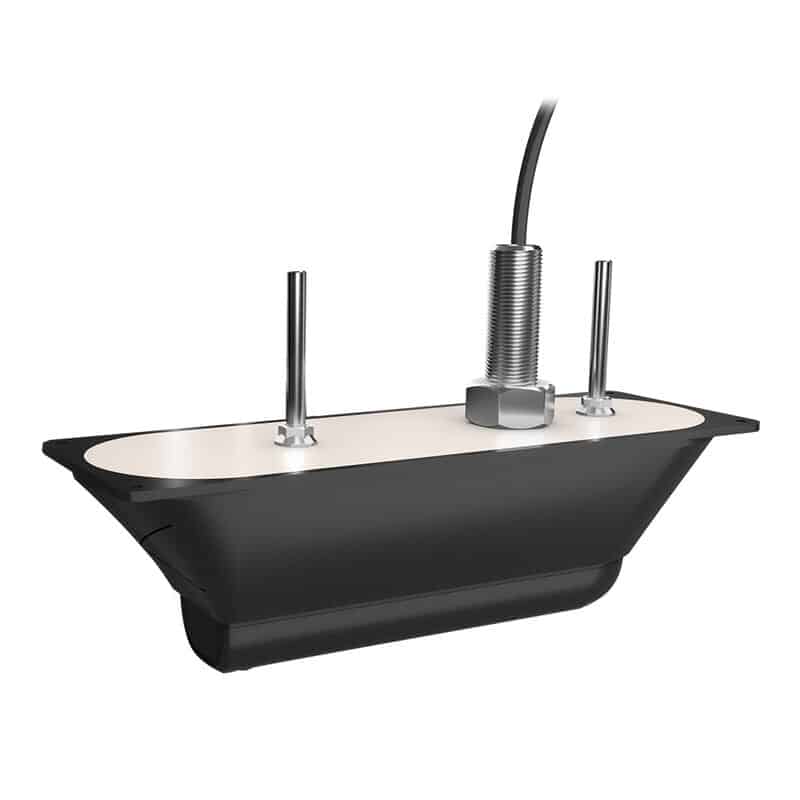
A thru-hull transducer is installed through the bottom of the boat hull and into the bilge area. They are constructed of either bronze, plastic, or stainless steel. You’ll need to know your boat’s hull material before choosing one.
Bronze is great for fiberglass and wood hulls. Plastic is suitable for fiberglass and metal hulls. Stainless steel is recommended for steel and aluminum hulls. These are the most challenging types to install but also the most accurate.
Transom
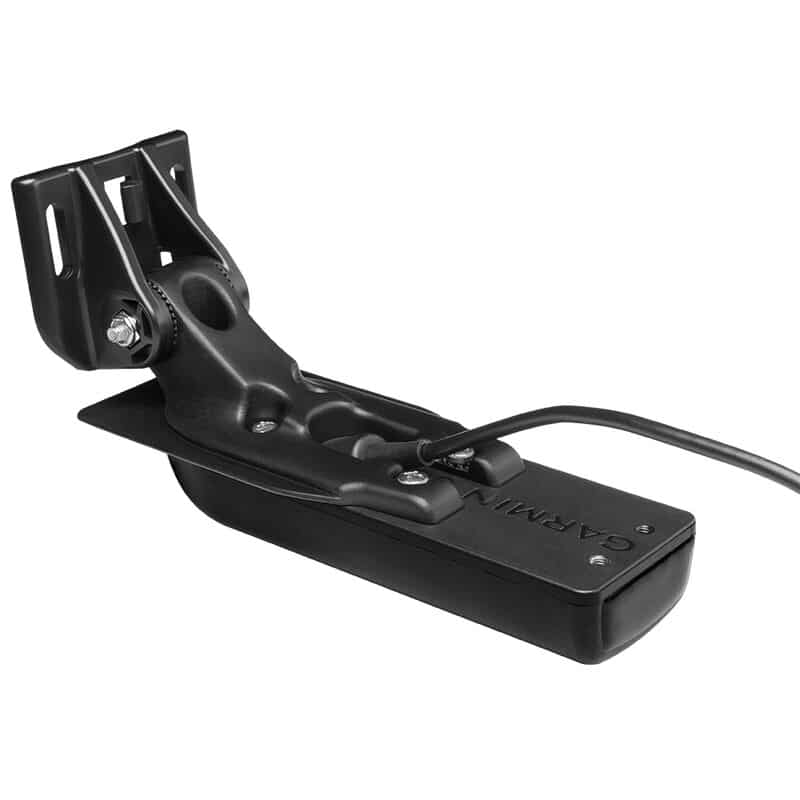
A transom transducer is bolted to an angled bracket that’s mounted onto the transom on the starboard side of the motor. The great thing about transom-mounted transducers is that they are easy to install and work on different hulls like wood, fiberglass, aluminum, or steel. They also work with outboard motors, inboard motors, or both.
In-Hull
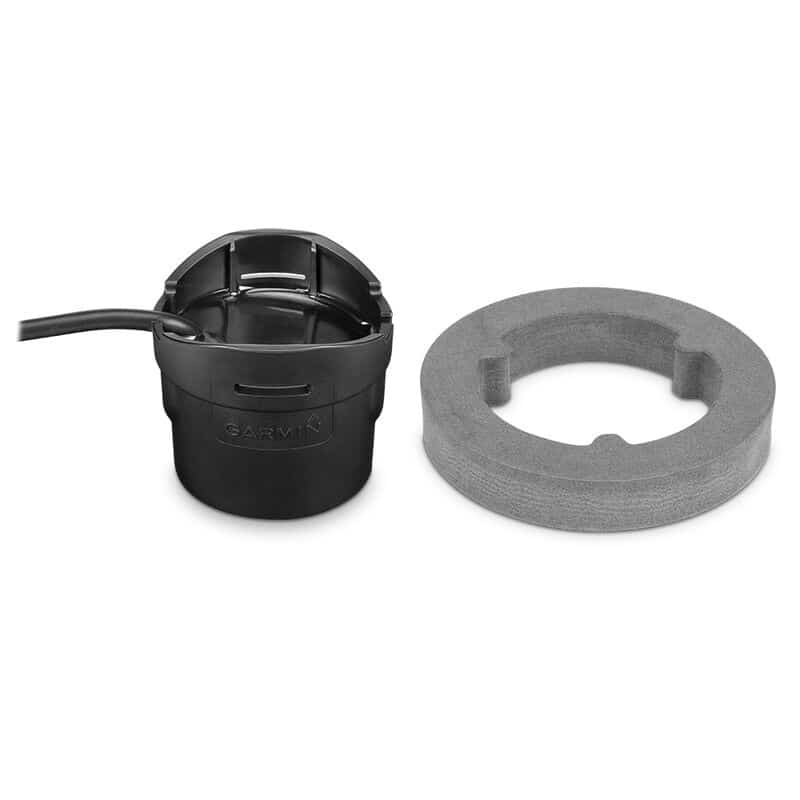
An in-hull transducer is installed inside the bilge on the bottom of the boat. The transducer then sends the signal through the hull and into the water under the boat. It’s the easiest type to install and requires no drilling into the boat for installation. The hull must be solid fiberglass for an in-hull transducer to work.
Frequency Ranges
Each transducer operates on a specific frequency. It’s important to consider your fishing location when choosing the correct frequency as it affects performance. For example, a transducer with a high frequency is better for shallow water, whereas a transducer with a low frequency is better for deeper water. The higher the frequency, the better the image. Transducers are offered in a wide range of options from 50kHz to 800kHz.
Types of Sonar
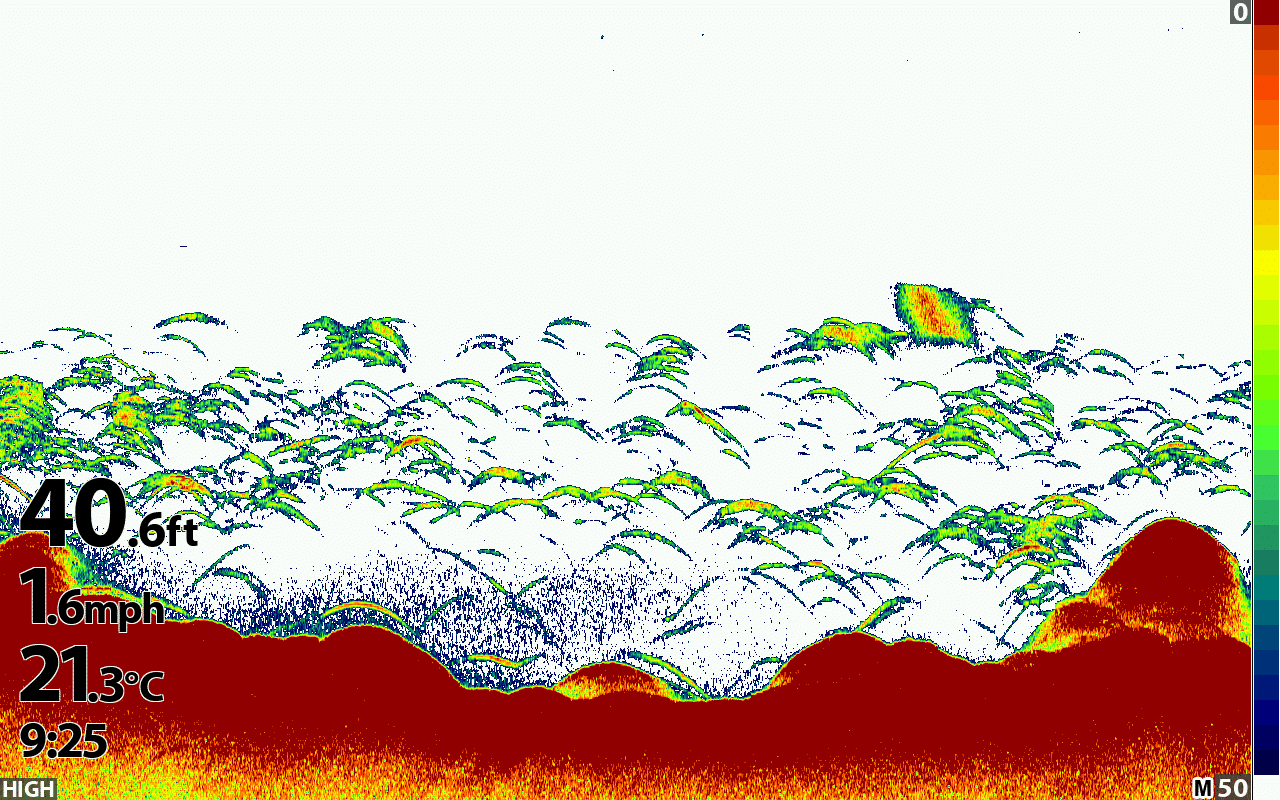
In addition to different frequencies, there are different sonar technologies that transmit these frequencies. Let’s review the basics.
Fixed Frequency Sonar (Traditional)
As the name implies, this type of technology uses a singular fixed frequency. This is the oldest technology used in fish finders. Some common frequencies found with this technology include 50Khz, 80kHz, and 200kHz. We recommend 200kHz for depths up to 200’ and 50kHz or 80kHz for deeper water.
High-Frequency Sonar
High-frequency sonar is not recommended for deep water, but it does an excellent job in shallow water, providing a crisp image. You’ll typically find these offered in either 455kHz or 800kHz.
Directional Sonar
This technology incorporates an amiable transducer that lets you direct the wavelengths in your chosen spot. These typically high-frequency devices are great for picking up drop-offs, channels, and underwater structures so you can set your boat on top for better fishing.
CHIRP Sonar
CHIRP sonar is the newest technology found in fish finders. It uses a range of sweeping frequencies, from low to high. There are many benefits of using multiple sweeping frequencies. Multiple sweeping frequencies are much better than singular fixed, producing better detail, resolution, and accuracy.
CHIRP allows for target separation so that you can see fish on the bottom, differentiating them from other structures. There is also less interference from underwater disturbances that give a false reading.
Beamwidth
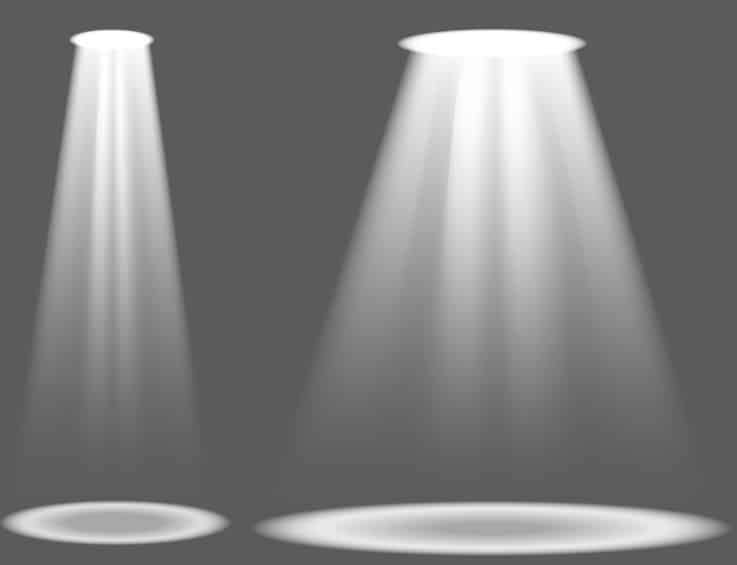
The beamwidth of a transducer is essentially the area in which the sound waves travel. Imagine putting a flashlight on the bottom of the boat pointed down; that’s your beamwidth. You’ll only be able to see objects inside your beam, so choosing the right one is important.
A high frequency has a tight beam, and a low frequency has a wide beam. As already stated, higher frequencies provide a clearer image, whereas lower frequencies provide more depth. This is because of the beamwidth. Returning to the flashlight analogy, think of high frequency as a spotlight concentrated on a small area and think of low frequency as a flood light with a wide pattern.
Where is the Best Place to Put a Transducer on a Boat?
Transducer placement is crucial to performance. You must drill through the hull for thru-hull transducers, so you’ll want to be sure to get this right the first time. Unfortunately, there isn’t a singular placement spot that works great for every boat or transducer type. My best advice is to follow the instructions provided with your transducer for placement and reach out to a professional in your area if you are still unsure.
You’ll want to place your transducer away from any underwater disturbances that could give false readings. Some examples of these are stepped hulls, strakes, and ribs. If you trailer the boat, make sure the placement doesn’t interfere with your bunks. You must also ensure the transducer is completely submerged under the water line. Don’t forget about your boat’s deadrise in determining the proper beam angle. Because electrical devices can share the same frequencies, you don’t want to place the transducer near them, such as your radar or stereo.
Transducer Maintenance
There’s not much maintenance required for a transducer. However, there are a few things you’ll want to check every so often. If you trailer your boat, it’s a good idea to inspect the outer surface of the transducer to ensure there are no foreign objects stuck to it that could disrupt the signal. You’ll also want to examine the transducer for damage, such as cracks.
Inside the hull, you’ll check around the transducer for leaks. However, this is mainly for thru-hull transducers, but you can also experience leaks with transom-mounted transducers. It’s also a good idea to inspect your wiring to ensure the jacket is in good condition and there is no chafing or corrosion.



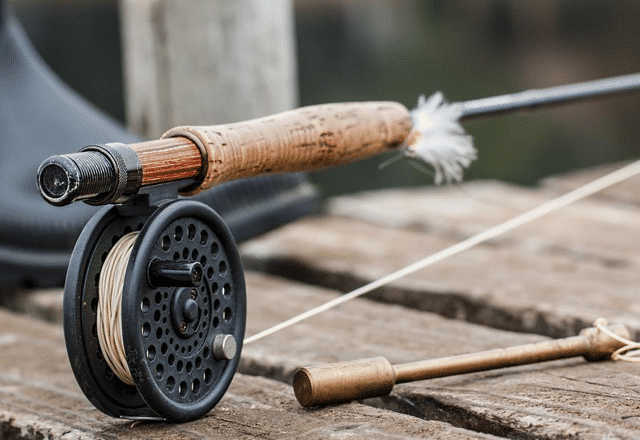
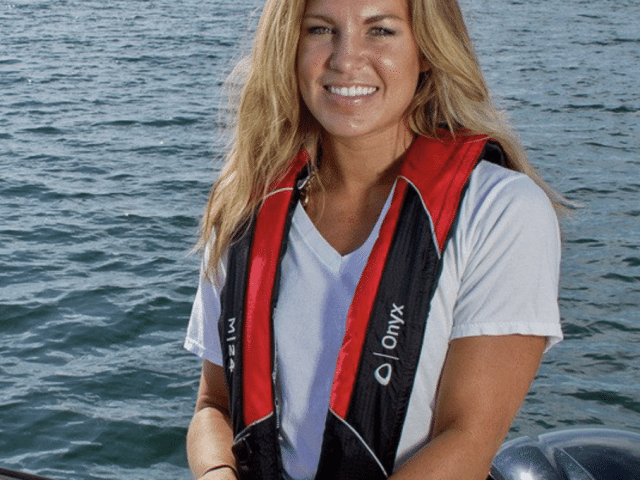
[…] How to Choose a Boat Transducer […]
[…] How to Choose a Boat Transducer […]
[…] How to Choose a Boat Transducer […]